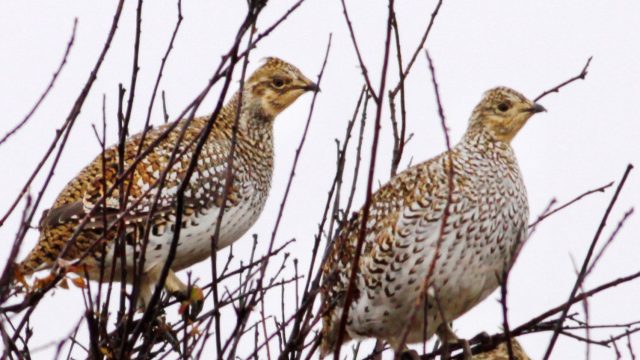Doug Leier: Game & Fish To Survey Hunters

As a life-long resident of North Dakota, I take pride in knowing that hunters contribute more to our outdoor heritage than just license dollars.
Something as simple as voluntarily reporting violations goes a long way to assist game wardens in doing their jobs, and many poachers are caught each year because hunters got involved.
Hunters also help with the entire wildlife population management process by participating in various surveys.
I learned this well before my formal college and work experience, as it was routine for my dad and his grouse hunting companions in the 1980s to take part in the North Dakota Game and Fish Department wing survey. In fact, they took great pride in contributing grouse and partridge wings and feathers to the cause, putting them in their allotted envelopes following each hunt and sending them off in the mail when they got back to town.
Little did I know back then that this practice had been going on for a generation.
Game and Fish biologists started the upland game wing survey back in the early, realizing the potential for hunters to obtain feathers and feet from harvested birds, which would lead to a better understanding of young birds to adults in the harvest, and in the case of all species except pheasants and spring turkeys, the harvest breakdown between male birds and female birds.
Birds included in the survey are ring-necked pheasants, sharp-tailed grouse, Hungarian (gray) partridge, turkeys and ruffed grouse. Sage grouse were also included when that season was open.
Stan Kohn, Department upland game management supervisor, said in the recently published August-September issue of “North Dakota Outdoors” magazine, that some hunters will receive a packet of wing envelopes because they indicate on the Department’s small game questionnaire that they hunted these species the previous year.
Participants for the pheasant survey are selected if they indicated they shot three or more birds the previous year.
This fall, Game and Fish will send 1,000 survey packets to pheasant hunters and 600 to sharp-tailed grouse and Hungarian partridge hunters.
The packets hunters receive include preaddressed, prestamped wing envelopes containing instructions for proper use.
“The instructions are simple to follow, but we need to remind hunters to make sure and record on the envelope the date and county where the bird was harvested,” Kohn said. “Without this information, we can’t use any of the feathers in the envelope.”
Participation in the survey from pheasant hunters has been good, Kohn said, but in recent years participation from sharp-tailed grouse hunters has gone down, so Game and Fish is trying to involve as many other grouse hunters as possible who have not already received wing survey packet.
Any grouse and/or partridge hunter, young or old, resident of nonresident, can be a part of the wing survey. The simplest way is to visit the Game and Fish website at gf.nd.gov and look for the wing survey link under the upland game section. Just provide a name and address and a packet of wing envelopes will be on their way.
You can also email Game and Fish at ndgf@nd.gov, or call 701-328-6300 to request harvest survey envelopes.
In addition to determining age and sex ratios, biologists use these specimens to determine survival, nesting success, hatch dates and overall production.
There’s no doubt North Dakota’s hunting landscape has evolved and changed over the course of generations. But hunters still realize that their assistance and cooperation with surveys is important, for 2014 and into the future.




